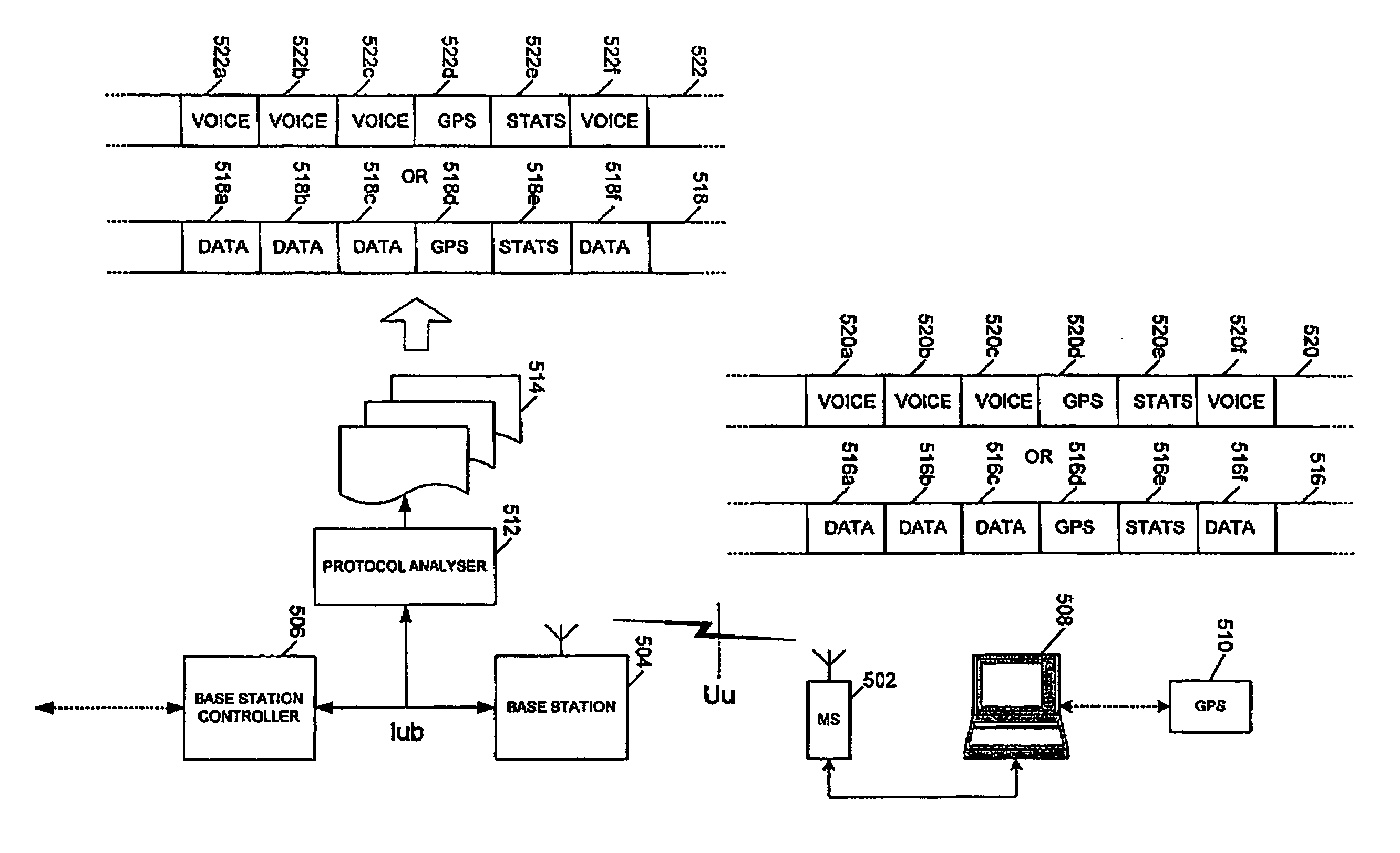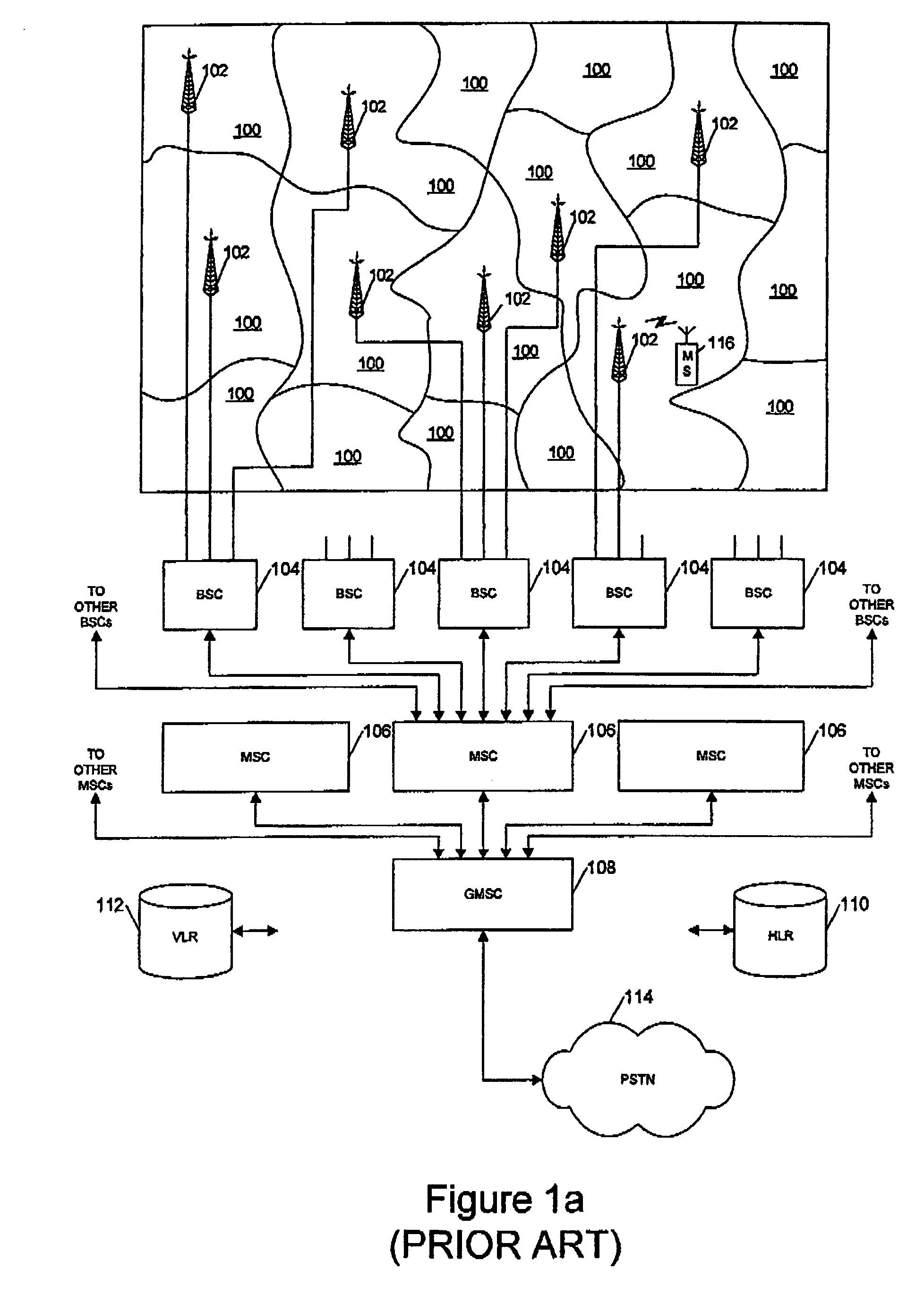Network testing and monitoring systems
a network and monitoring system technology, applied in the field of mobile phone network testing, can solve the problems of network operators' complex heuristics, gaps in coverage, and further complicated considerations, and achieve the effects of slow throughput, tolerable signal-to-noise ratio, and background nois
- Summary
- Abstract
- Description
- Claims
- Application Information
AI Technical Summary
Benefits of technology
Problems solved by technology
Method used
Image
Examples
first embodiment
[0115]Referring now to FIG. 5, this conceptually illustrates a method of according to the present invention. A mobile station or handset 502 is in two-way radio communication with a base station 504, which in turn communicates with and is controlled by a base station controller 506 across an Iub interface. A protocol analyser 512 is coupled to the Iub interface connection between base station 504 and base station controller 506, and is thus able to capture all the signals flowing between the base station and the base station controller and to record these in a series of data files 514 spaced at, for example, 15 minute intervals.
[0116]A terminal 508, such as a laptop computer, is connected to mobile station 502 for sending and receiving commands and data to and from the mobile station and thence to another device (not shown). This further device may be another mobile communications device on the same or another network or it may be a device connected to an external network such as th...
second embodiment
[0156]Referring now to FIG. 11, this illustrates a variant of the above-described method, according to the invention. Broadly speaking the elements of FIG. 11 correspond to those of FIG. 5 and are indicated by corresponding reference numerals. However instead of a separate terminal 508 being connected to mobile station 502, software for facilitating operation of the method is stored within mobile station 502, as described in more detail below with reference to FIG. 13.
[0157]A significant difference between the methods illustrated by FIGS. 11 and 5 is that in FIG. 11 a software agent within MS 502 monitors real traffic 1102 rather than test traffic, and transmits a second stream of traffic 1104 including information derived from this monitoring, to some remote destination such as a remote server. This real traffic, or at least signalling associated with this real traffic, may then be captured at an interface within the network and stored (traffic 1106) together with the information t...
PUM
 Login to View More
Login to View More Abstract
Description
Claims
Application Information
 Login to View More
Login to View More - R&D
- Intellectual Property
- Life Sciences
- Materials
- Tech Scout
- Unparalleled Data Quality
- Higher Quality Content
- 60% Fewer Hallucinations
Browse by: Latest US Patents, China's latest patents, Technical Efficacy Thesaurus, Application Domain, Technology Topic, Popular Technical Reports.
© 2025 PatSnap. All rights reserved.Legal|Privacy policy|Modern Slavery Act Transparency Statement|Sitemap|About US| Contact US: help@patsnap.com



